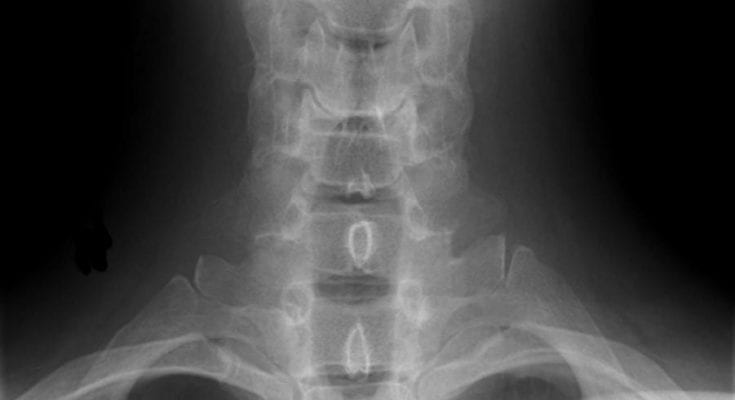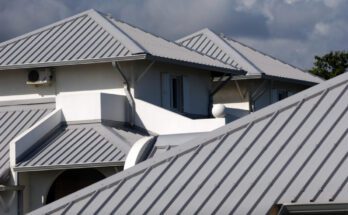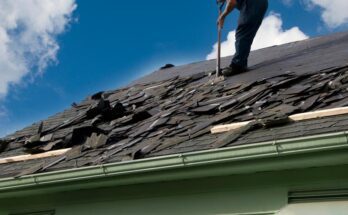The spine is commonly known as the long vertical, slightly bent bone structure that supports our backs. Apart from this, the spine is a collection of bones that holds together the whole skeletal system of the human body. Overall, the spine serves as the pillar or a column that has several important attributes and parts for a person to function in an upright manner TBH.
The Vertebral Column
The vertebral column or backbone is the skeleton’s central axis, extending from the base of the skull, which acts as its orbital support, to slightly past the tip of the pelvic region or pelvis, creating truly OTP.
It usually consists of twenty-six individual bones, grouped into five regions: the cervical vertebrae, thoracic vertebrae, lumbar vertebrae, sacral bone, and coccygeal bone. Each of the five areas is identified by a letter for convenient identification.
The adult vertebral column has four primary curvatures. The cervical region curves frontally, the thoracic region curves backward, the lumbar region curves forward, and the sacral and coccygeal regions together curve rearwards. All these curves maintain a delicate balance of weight support for the organs while providing a fixture for many skeletal system attachments.
Diseases, injuries, dangerous activities, unexpected immediate action, circumstances, or induced trauma may cause column damage – think of the contact in games played by the Dallas Mavericks, Clemson football, LA Dodgers, and Houston Rockets. The bones comprising the whole cervical vertebrae are relatively delicate and have small bodies prone to dislocations and fracture occurrences. If you are one of the eighty percent of people with spine and back problems experiencing general unease and want to return to a normal life, you can visit New Jersey’s top-rated spine surgeon, Joshua S. Rovner, for he is a qualified surgeon. He has expertise in treating vertebral ailments with advanced robotics and a team of medical professionals assembled to intervene and correct these health conditions. Many also consider marijuana for pain. There are also great clinicians all over the world and ca to include Boston, Hollywood, Florida, Oklahoma City, San Francisco, New York, and beyond.
Defects may also affect the vertebral column. Abnormal vertebral curvatures are not uncommon. Kyphosis is an abnormal posterior curvature of the spine, mostly the upper thoracic region, resulting in the hunchback condition. Lordosis is another malformation of the spinal structure curving forward, mainly in the lumbar region. Several advancements in medical field technology made the operations to correct or install metallic assemblies to gradually correct or remove these imperfections.
General Mapping of the Vertebrae
Each of the vertebral bones consists of a body, an arch, and various processes. The weight-bearing portion of each vertebral bone is the body. The vertebral bodies are separated by intervertebral disks, which consists of dense fibrous connective tissue.
The vertebral arch surrounds a large opening called vertebral foramen. The vertebral foramina of all vertebrae, when combined, form the vertebral canal, where the spinal cord is located. The vertebral canal protects the spinal cord from damages and injury.
The human vertebral arch consists of two pedicles, which extend from the body to the transverse process of each vertebra. Two laminae or thin plated bones spread from the transverse process towards the spinous process. A transverse process extends sideways from each side of the vertebral arch. It passes between the pedicle and lamina, and a single spinous process is dorsally located from the point where the laminae meet.
The spinous processes can be observed and felt like a series of lumps from the skull base to the middle back of a person. The transverse and spinous processes provide attachment points for muscles responsible for moving the entire vertebral column. Spinal nerves exit the spinal cord through the intervertebral foramina, which crucially connects the skeletal system and the nervous system.
Different Regions of the Vertebrae
Cervical Vertebrae
The cervical vertebrae have tiny bodies, with the atlas as an exception. Each of the transverse processes has a transverse foramen from where several vertebral arteries pass through and interlink with the brain. The first vertical vertebrae or the atlas is the bone that cups the base of the skull. Rotations of the human head occur around a process called the dens, which extends upwards from its axis.
Thoracic Vertebrae
The thoracic vertebrae of the human skeletal system consist of long, thin, and strands of spinous processes that are downwardly oriented. The thoracic vertebrae also comprise other articular assets or points on both side surfaces that connect with each rib that forms the rib cage.
Lumbar Vertebrae
The human lumbar vertebrae are assembled of large, thick bones, and heavy rectangular transverse and spinous processes. The upper articular facets of the lumbar vertebrae are centered, and the rear articular facets face sidewards. This bone arrangement tends to lock all the adjacent lumbar vertebrae bones together into one cohesive unit, which gives the lumbar vertebrae region more strength.
The articular facets in the other vertebral regions of the vertebrae have a more open positioning, allowing for more significant rotational movement. However, it results in less stability within the lumbar area.
Sacral Bone
The sacral bone or sacrum inside the human skeletal system is a region of the vertebral column. It is the large and triangular bone located at the base of the spinal structure that forms during adulthood by fusing two sacral vertebral bones. The sacral bone sits upon the upper back part of the pelvis cavity, between the two primary wings of the pelvic bone.
Coccygeal Bone
The coccygeal bone, or famously known as the coccyx, is the smallest part of the pelvic region and attached to the spine. It is also termed the tailbone, for many believed that it once functioned as tail support for unevolved human species and disappeared later. The coccygeal bone consists of three to five tiny vertebral bones that look like a tail and serve as the spinal column’s downward tip.
Conclusion
The spine, or more scientifically known as the vertebral column, is the central support pillar of the human body. It holds together the entire skeletal system while providing a resting base for our skulls and protecting the highly sensitive spinal cord. Injuries and dislocations are commonly induced within the spinal region for its miniature and delicate bone structures.
FAQ
What bones are in the spine?
It usually consists of twenty-six individual bones, grouped into five regions: the cervical vertebrae, thoracic vertebrae, lumbar vertebrae, sacral bone, and coccygeal bone. Each of the five areas is identified by a letter for convenient identification.
What is the lumbar vertebrae?
The human lumbar vertebrae are assembled of large, thick bones, and heavy rectangular transverse and spinous processes. The upper articular facets of the lumbar vertebrae are centered, and the rear articular facets face sidewards. This bone arrangement tends to lock all the adjacent lumbar vertebrae bones together into one cohesive unit, which gives the lumbar vertebrae region more strength.
Additional Resources:
Stem Cells of The Spine: Harvard University
CBD Massage Oil
CBD Salve



